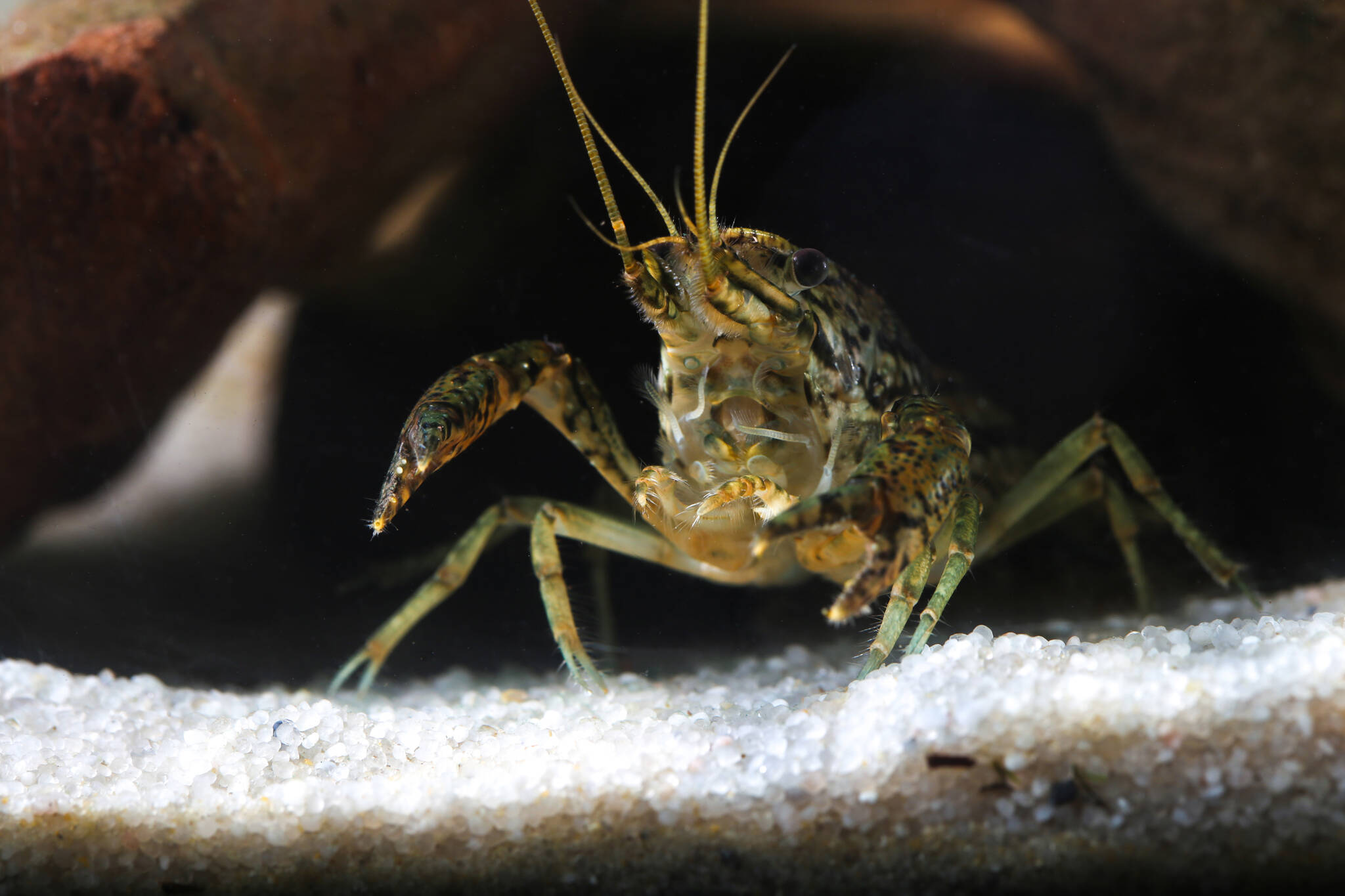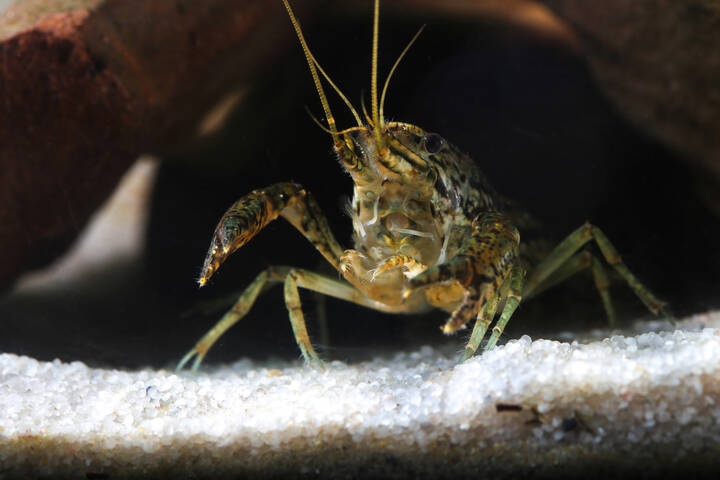
Invasive mutant self-replicating lobster-like creatures have arrived in Ontario
A new invasive alien-like creature known as the marbled crayfish is spreading across lakes, ponds, and waterways across the continent, and the species has already been discoveredright here in Ontario.
Marbled crayfish (Procambarus virginalis) may look ancient, but the species is actually much younger than one would expect. No known wild species exist, and the breed originated in the aquarium trade in 1995 before being introduced into natural settings.
That first-ever marbled crayfish came into existence through a freak mutation discovered in a single animal, which allowed it to self-clone. Almost three decades later, the species has spread rapidly in the wild, threatening the destruction of aquatic ecosystems across Europe and North America.
These all-female crayfish — which appear similar to lobsters but with a smaller, grey, marbled appearance — pose a particularly critical threat to local ecosystems due to their ability to rapidly self-replicate.
Asexual reproduction allows one single animal to establish large populations with increasingly exponential growth. A lone marbled crayfish is capable of producing hundreds of offspring each time they reproduce.
Those hundreds of all-female offspring will then each produce hundreds of their own clones, and so on, until waterways are clogged up with the freshwater crustaceans.
The species' concerningly rapid spread was confirmed to have reached Ontario earlier this summer.
Canada's Ministry of Natural Resources and Forestry (MNRF) announced via press release in August that a marbled crayfish was found in a pond in the Burlington, Ontario area, the first discovery of the species in the wild in the country.
The MNRF shared that it was working with its partners "to protect Ontario's habitats and biodiversity from this invasive species."
Though they originate as aquarium pets, marbled crayfish are among the over 30 regulated invasive species controlled under the Invasive Species Act.
Species regulated under the act are illegal to import, possess, release, transport, breed/grow, buy or sell in Ontario — including their intended use as aquarium pets.
In fact, you might even already have one in your aquarium and not even know it yet. Marbled crayfish are often sold under other names, including self-cloning crayfish or marmorkrebs.
The MNRF is especially concerned about these fast-spreading aquatic invaders, stating that, if established, their rapid reproduction "will have a negative impact on Ontario's native crayfish populations through competition for food and habitat."
Marbled crayfish threaten to push out native crayfish species, which are already suffering in parts of the province due to the introduction of the unrelated but also invasive rusty crayfish.
Further down the food chain, masses of marbled crayfish could impact local biodiversity, stripping away bodies of water by feeding on their algae, plants, invertebrates, and amphibians.
The MNRF is asking members of the public to report sightings of marbled crayfish in the wild by calling the toll-free Invading Species Hotline at 1-800-563-7711 or reporting online using EDDMapS.
Geza Farkas/Shutterstock
拉test Videos
拉test Videos
加入谈话Loadcomments







